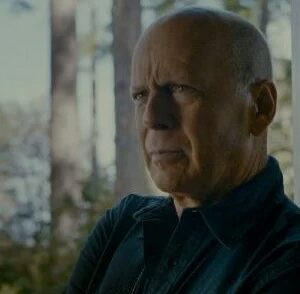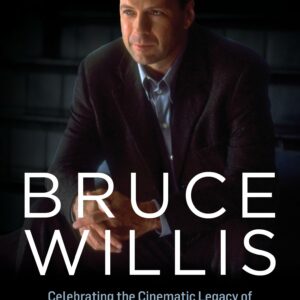Few actors have consistently demonstrated the kind of depth, nuance, and versatility that Ryan Gosling brings to each of his roles. Over the years, Gosling has not only established himself as a Hollywood leading man, but he’s also cemented his place as an artist with an extraordinary commitment to the craft of acting. Known for his transformative performances, Gosling has become synonymous with characters that feel real, raw, and emotionally resonant. This article explores how Gosling approaches character development, the research methods he employs, and how he uses acting techniques like method acting to bring his characters to life.
Commitment to Research
Before Ryan Gosling ever steps foot on a film set, the real work begins. For Gosling, preparing for a role is more than just memorizing lines or getting into physical shape—it’s about diving deep into the world of his character. His commitment to research has become legendary, and it’s this dedication that often leads to his most memorable performances.
Take, for example, his role as Neil Armstrong in First Man (2018). Playing one of the most iconic figures in American history meant that Gosling had to portray not only Armstrong’s public persona but also his more private, internal struggles. To do this, Gosling spent countless hours researching the life of the astronaut, reading biographies, and listening to recordings of Armstrong’s voice. He even worked with NASA engineers to understand the intricacies of space travel. This meticulous approach to research allowed Gosling to not only understand Armstrong’s actions but also his mindset and emotional state during the harrowing Apollo 11 mission.
Similarly, for his role in Blue Valentine (2010), Gosling and co-star Michelle Williams lived together in a house for several weeks to simulate the experience of a real marriage. They took part in day-to-day tasks, from grocery shopping to celebrating birthdays, blurring the lines between real life and fiction. This immersive experience helped Gosling craft a performance that felt deeply authentic, showcasing a character whose relationship was unraveling in painfully realistic ways.
Gosling’s dedication to research extends to learning new skills for his roles. For La La Land (2016), he spent months training on the piano to convincingly play the role of a jazz musician. His on-screen performance wasn’t just the result of movie magic or body doubles—it was the product of hours of practice and an unrelenting commitment to authenticity.
Immersing in the Role: Method Acting
At the core of Gosling’s approach to acting is his use of method acting, a technique that requires an actor to fully immerse themselves into the emotional and psychological life of the character. For Gosling, method acting isn’t just about pretending to be someone else—it’s about becoming that person.
A prime example of this is his preparation for The Notebook (2004), one of his most well-known roles. To prepare for the part of Noah, Gosling moved to South Carolina months before filming began. He spent time learning how to build furniture—an integral part of Noah’s character arc—and even lived without electricity to get a sense of the simpler life Noah would have led. This physical immersion allowed Gosling to embody the rugged, determined qualities of the character in a way that felt natural and unforced.
In Drive (2011), Gosling’s portrayal of a mysterious stunt driver required a different kind of immersion. Here, Gosling opted for an internal approach, focusing on the stillness and restraint of his character. The film’s minimal dialogue and stark atmosphere meant that Gosling had to rely on subtle body language and facial expressions to convey emotion. By fully inhabiting the quiet, solitary nature of the driver, Gosling was able to create a performance that was both haunting and magnetic.
Gosling’s use of method acting also involves tapping into his own life experiences to connect with his characters on a deeper emotional level. In Lars and the Real Girl (2007), Gosling played a socially awkward man who forms a romantic attachment to a life-sized doll. While the role was quirky and could have easily veered into caricature, Gosling approached it with a sense of vulnerability and sincerity. He later revealed that he used his own experiences of loneliness to inform the character, adding layers of emotional complexity that made Lars both sympathetic and compelling.
Collaboration with Directors and Co-Actors
Ryan Gosling’s performances are often marked by a deep collaboration with the directors and actors he works alongside. Unlike some actors who might be more solitary in their process, Gosling thrives in environments where dialogue and feedback are encouraged.
His relationship with director Nicolas Winding Refn, with whom he worked on Drive and Only God Forgives (2013), is a prime example of this collaborative spirit. Refn has spoken about how Gosling would actively contribute ideas on set, offering insights into the character’s motivations and actions. This openness to collaboration allowed the two to create films that felt cohesive and stylized, while still giving Gosling the freedom to explore the emotional depth of his characters.
In Blue Valentine, Gosling’s collaboration with co-star Michelle Williams was essential to the film’s raw emotional power. The two actors were given a considerable amount of creative freedom to improvise scenes, resulting in moments of spontaneous, unfiltered emotion. This freedom allowed Gosling to tap into the messy, unpredictable nature of real relationships, which became a hallmark of the film.
Gosling’s ability to collaborate also extends to his willingness to adapt to the specific needs of each film and director. Whether it’s the dreamy, heightened reality of La La Land or the gritty realism of Half Nelson (2006), Gosling tailors his approach to fit the tone and style of the film, making his performances feel organic and in tune with the larger vision of the project.
Emotional Vulnerability
One of the defining characteristics of Ryan Gosling’s acting is his ability to tap into a deep well of emotional vulnerability. Whether he’s playing a romantic lead or a brooding anti-hero, Gosling consistently brings a rawness to his performances that allows audiences to connect with his characters on a personal level.
In Half Nelson, Gosling plays a high school teacher struggling with drug addiction. The role required him to show both the strength and fragility of a man trying to hold his life together while slowly unraveling. Gosling’s portrayal was subtle but powerful, filled with moments of quiet desperation that made his character’s internal conflict feel palpable. His performance in the film earned him his first Academy Award nomination, solidifying his reputation as one of the most emotionally honest actors of his generation.
Gosling’s emotional vulnerability is also evident in films like The Place Beyond the Pines (2012), where he plays a motorcycle stunt rider who turns to crime to support his family. In the film, Gosling’s character is torn between his love for his child and his self-destructive tendencies. His portrayal of a flawed but loving father resonated with audiences, who could see the layers of pain, guilt, and hope beneath his tough exterior.
Even in more lighthearted films like Crazy, Stupid, Love (2011), Gosling brings emotional depth to his characters. While his role as a smooth-talking ladies’ man could have been played for laughs, Gosling imbued the character with a vulnerability that made him more than just a charming player. His chemistry with co-star Emma Stone and his willingness to show the character’s insecurities turned what could have been a one-dimensional role into a fully realized, emotionally rich performance.
Experimentation and Risk-Taking
Throughout his career, Ryan Gosling has never shied away from taking risks or experimenting with different styles and genres. This fearlessness has allowed him to maintain a sense of unpredictability in his career, keeping both audiences and critics on their toes.
In Drive, Gosling’s performance as the nameless driver was a departure from his previous roles. The character’s stoic silence and violent outbursts created a tension that made the film feel like a slow-burn thriller. Gosling’s willingness to play a character with so few lines and rely almost entirely on physicality was a bold choice, but one that paid off, earning him widespread acclaim.
Similarly, in Lars and the Real Girl, Gosling took a risk by playing a character in a romantic relationship with a doll. The premise could have easily been played for laughs, but Gosling approached it with a sincerity that elevated the film into a poignant exploration of loneliness and human connection.
Gosling’s risk-taking isn’t just limited to his choice of roles—it extends to his willingness to work with unconventional directors and experiment with new storytelling techniques. His collaboration with director Derek Cianfrance on Blue Valentine and The Place Beyond the Pines led to two of his most complex and emotionally challenging roles, while his work with Nicolas Winding Refn pushed him into new territory as an action star with a dark, introspective edge.
Conclusion
Ryan Gosling’s approach to character development is a testament to his dedication, creativity, and emotional honesty. His meticulous research, commitment to method acting, and collaborative spirit have allowed him to craft performances that feel authentic and deeply resonant. Whether he’s playing a heartbroken lover, a haunted criminal, or a silent driver, Gosling’s ability to tap into the emotional core of his characters sets him apart as one of the most talented actors of his generation.
In a world where Hollywood is often driven by spectacle and surface-level performances, Gosling’s willingness to take risks, embrace vulnerability, and fully immerse himself in his roles is a reminder of the transformative power of acting. Through his work, Gosling continues to push the boundaries of what it means to be an actor, and in doing so, he creates characters that linger in the minds and hearts of audiences long after the credits have rolled.





